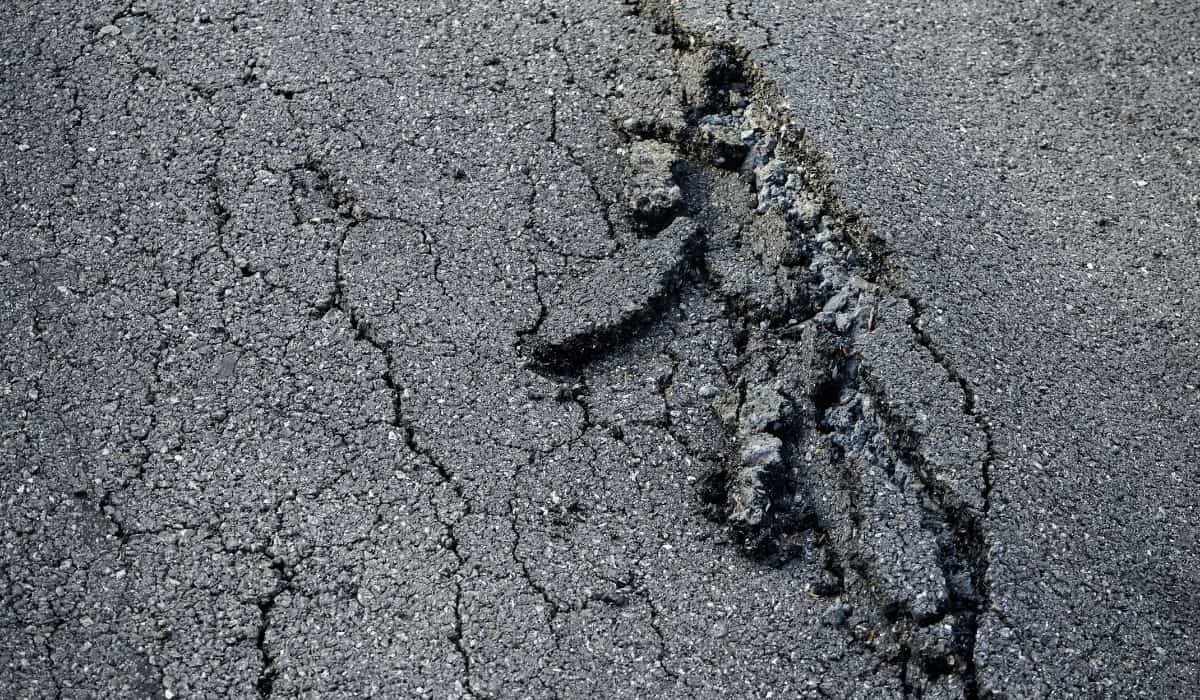Everything about A1 Professional Asphalt & Sealing Llc
Everything about A1 Professional Asphalt & Sealing Llc
Blog Article
About A1 Professional Asphalt & Sealing Llc
Table of ContentsThe smart Trick of A1 Professional Asphalt & Sealing Llc That Nobody is Talking AboutThe Definitive Guide for A1 Professional Asphalt & Sealing LlcHow A1 Professional Asphalt & Sealing Llc can Save You Time, Stress, and Money.Some Known Incorrect Statements About A1 Professional Asphalt & Sealing Llc Not known Details About A1 Professional Asphalt & Sealing Llc

The oil in a cars and truck engine is not just oil. It has a range of ingredients to improve the car's efficiency. These include polymers, thickness modifiers, heat stabilizers, added lubes, and put on ingredients. The REOB consists of all the ingredients that remained in the waste oil in addition to the wear steels from the engine (mainly iron and copper).
However, by making lots of blends making use of different REOB samples and different asphalt binders, the variations mainly can be balanced out. Several States offered samples of recognized REOB structure to TFHRC scientists, that assessed the examples to contrast the percent of included (recognized) REOB to the found (tested) amount. The analyses showed a similar percentage of added and found REOB.
Things about A1 Professional Asphalt & Sealing Llc
They obtained a frustrating action. The TFHRC researchers assessed 1,532 examples from 40 States, one Canadian province, and 2 Government Lands Highway departments. They examined each sample twiceamounting to more than 3,000 analyses. None of those States realized that the asphalt they were acquiring contained REOB. One State insisted its samples had no REOB.
Of the 1,532 samples tested, 12 percent had REOB, and some had significantly high degrees of it at 1020 percent. The greatest level was 34 percent in a sample from Texas, which TxDOT had actually utilized in a patching compound. This screening likewise revealed the visibility of phosphoric acid in 11 percent of the examples, and 2 percent consisted of ground tire rubber.
Two years earlier at TRB's yearly meeting, the Federal researchers held an REOB workshop and provided the findings of their research laboratory analyses to a standing room-only group. Some firms do not particularly ban REOB, they do enforce physical tests that avert its useeffectively a ban. Others do not prohibit it by specification, yet have arrangements with asphalt providers to prevent using REOB
How A1 Professional Asphalt & Sealing Llc can Save You Time, Stress, and Money.
A handful do permit REOB, some within certain limitations. As an example, Ohio and Texas restriction levels to less than 5 percent of the asphalt. To establish a reliable examination approach that all States can make use of, the TFHRC scientists established up a round-robin test strategy. The individuals are 11 State highway agencies (Illinois, Massachusetts, Minnesota, Mississippi, Montana, North Carolina, Oklahoma, South Carolina, Texas, Vermont, and Wyoming), 2 independent testing labs, the Ministry of Transport in Ontario, Queen's University in Ontario, and an Ontario paving contractor.
In overall, the scientists prepared and shipped 720 blends. The participants are checking the samples separately utilizing the guidelines offered by the TFHRC researchers. The round-robin testing is nearly finished, and TFHRC remains in the procedure of gathering the results. The output will be a proposed AASHTO examination approach that any type of State can adopt and use (asphalt repairs).
The sidewalk with REOB, which is located 0.6 mile (1 kilometer) from the sidewalk without REOB, has similar subgrade, web traffic thickness, and environment. However, the sector great post to read of Highway655 with 5 to 10 percent REOB showed significant fracturing. In this example, the visibility of REOB was the determined root cause of splitting at a low temperature levels.
An area of examination pavement in Minnesota (MN1-4) discovered to have REOB also split too soon. The pavement done well for the initial 3 to 4 years, but then began to fracture.
A1 Professional Asphalt & Sealing Llc for Dummies
The tests were not substantial, yet they showed that at levels of 6 percent or even more, the tensile strength of the asphalt went down substantially. At a degree of 3.5 percent REOB, the variant in the physical test techniques was greater than the result of REOB. It was hard for scientists to examine whether REOB was present. https://a1asphaltseal.edublogs.org/2024/04/20/a1-professional-asphalt-sealing-llc-mastering-asphalt-repairs-and-sealcoating/.

One binder specification taken into consideration is the distinction between the low temperature level essential spec temperature for stiffness (S) in the flexing beam of light rheometer and the bending light beam rheometer creep slope (m-value) noted as Tcritical. 2 independent study groups, one from AASHTO and the other from the Asphalt Institute, concluded that even more research study is required on the use of REOB in asphalt.
Previously, all asphalt testing gauged engineering buildings such as rigidity. These examinations do not reveal what products had been included to the asphalt.

The Ultimate Guide To A1 Professional Asphalt & Sealing Llc
These outcomes demonstrate there are weaknesses in the standardized design screening procedures that may be made use of. The producer might have a financial advantage and the product passes all the standardized tests, yet the item might not be helpful to ensuring lasting efficiency. To address this issue and the development of brand-new asphalt additives and extenders, TFHRC is beginning a study program to utilize handheld spectroscopic tools, x-ray fluorescence spectroscopy, and Fourier transform infrared spectroscopy to enable evaluations to be performed in the field instead than having to take samples back to the lab.
Report this page